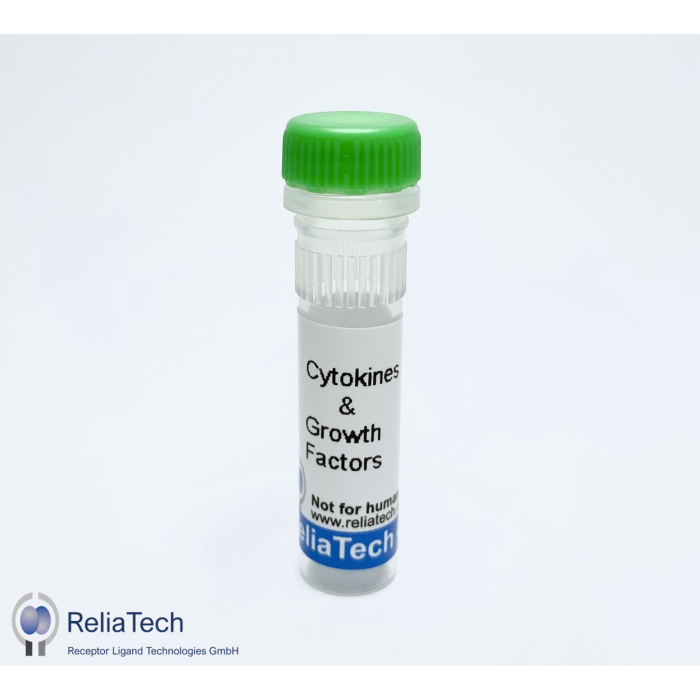Description / human TNF receptor type I, soluble protein
TNFR1 belongs to the TNFR superfamily of transmembrane proteins, and is expressed in most cell types. Binding of either TNF-α or TNF-β to TNFR1 initiates a signal transduction pathway that results in the activation of the transduction factor NFkB, whose target genes are involved in the regulation of inflammatory responses, and, in certain cells induce apoptosis. Soluble TNF Receptor I (sTNFR1) is capable of inhibiting TNF-α and TNF-β activities by acting as a decoy receptor that serves as a sink for the TNF ligands. Recombinant human sTNFR1 is an 18.3 kDa protein (162 amino acid residues) comprising the cysteine rich ligand binding portion of the extracellular domain of the TNFR1 protein.
More Information
| Size | 5 µg |
|---|---|
| Source | E. coli |
| Biological Activity | Determined by its inhibitory effect of the TNF-α mediated cytotoxicity in murine L-929 cells. The ED50 for this effect in the presence of 0.25 ng/ml of recombinant human TNF-α, is 0.05 µg/ml. |
| Purity Confirmation | > 98% by SDS-PAGE & FPLC analyses |
| Length [aa] | 162 |
| Molecular Weight | 18.3 kDa |
| Species Reactivity | Mouse, Rat, Human |
| Formulation | lyophilized |
| Protein Sequence | MDSVCPQGKY IHPQNNSICC TKCHKGTYLY NDCPGPGQDT DCRECESGSF TASENHLRHC LSCSKCRKEM GQVEISSCTV DRDTVCGCRK NQYRHYWSEN LFQCFNCSLC LNGTVHLSCQ EKQNTVCTCH AGFFLRENEC VSCSNCKKSL ECTKLCLPQI EN |
| Synonyms | TNFRSF1A; FPF; p55; p60; TBP1; TNF-R; TNFAR; TNFR1; p55-R; CD120a; TNFR55; TNFR60; TNF-R-I; TNF-R55 |
| Uniprot ID | P19438 |
| Protein RefSeq | NP_001056.1 |
| mRNA RefSeq | NM_001065.3 |

